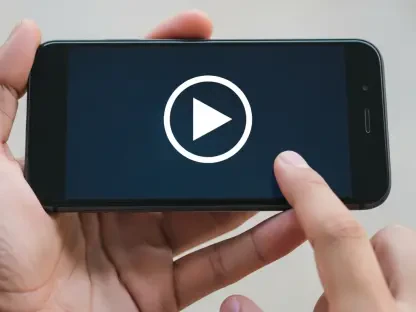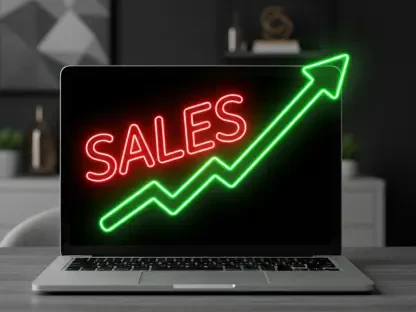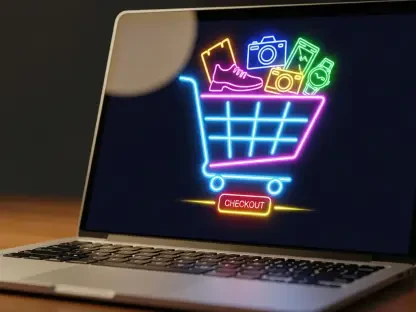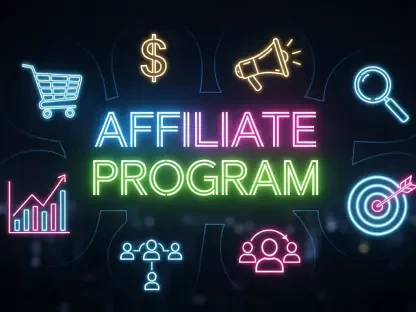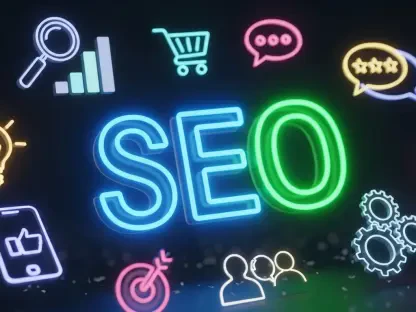When you’re trying to find new and innovative ideas to grow your business, attracting potential customers and converting them into loyal buyers is critical for sustainable success. A robust sales strategy is a fundamental pillar of achieving this goal, and one of the most effective tools for shaping this strategy is a modern sales funnel model.
Regardless of whether you operate a brick-and-mortar store or an online organization, understanding and serving based on customer segmentation is crucial, according to marketing expert, Ryan Narod. In this comprehensive guide, we will delve into the concept of a conversion funnel and break down its four key stages. You’ll also learn how to build an effective funnel to fully understand the importance of this powerful tool in driving business growth.
What Is a Sales Funnel?
The funnel is a systematic process that potential customers go through before making a purchase. Think of it as a journey, where prospects move from the stage of initial awareness to becoming loyal customers. By understanding the conversion funnel, companies can strategically guide prospects through each stage, addressing their needs and concerns along the way to maximize conversions.
Application of Sales Funnels for Brick-and-Mortar and Online Companies
The conversion funnel is a versatile concept that applies to both physical retail and online e-commerce settings. For brick-and-mortar companies, the top of the funnel may involve traditional advertising and in-store promotions, while the bottom involves closing the sale at the checkout counter. For online businesses, the top may involve social media marketing and search engine optimization, while the bottom represents the checkout process on the website.
Components of a Profitable Funnel: Top, Middle, and Bottom Stages
The purchase funnel consists of three primary stages: the top funnel (TOFU), the middle (MOFU), and the bottom funnel (BOFU). At the top, businesses focus on creating awareness and attracting potential customers. Next, they nurture leads and build interest in their products or services. Lastly, after awareness and a need for the product have been established, the goal is to convert prospects into paying clients.
The Four Stages of the Sales Funnel
Awareness, interest, decision, and action are the four main stages in any successful conversion funnel. Let’s take a look at each of these stages and how to nurture and guide consumers to the latter.
Awareness: Attracting Prospects to Your Business
The first stage of the purchase funnel is all about grabbing the attention of potential customers. To attract prospects, businesses employ various strategies, including social media marketing, online advertising, content marketing, and search engine optimization. By creating a strong online presence and delivering compelling messages, companies can drive traffic and generate interest in their offerings.
Interest: Nurturing and Engaging Prospects
Once prospects are aware of your business, it’s essential to nurture their interest and build trust in your brand. A content strategy plays a crucial role in this stage. Providing valuable and informative content, such as blog posts, videos, and guides, can keep prospects engaged and interested in your products or services. The goal is to position your company as an industry expert and demonstrate the value you can provide.
Decision: Guiding Prospects Towards Making a Purchase
In the decision stage, prospects are evaluating their options and deciding whether to make a purchase. Companies must present persuasive offers and personalized recommendations to address prospects’ specific needs and concerns. Testimonials, reviews, and case studies can also instill confidence in potential customers, helping them make an informed decision in favor of your business.
Action: Converting Prospects into Customers
The final stage of the sales funnel is all about converting users into paying customers. This is the moment of truth, where individuals either make a purchase or decide not to proceed. A smooth and user-friendly checkout process is crucial at this point. It’s essential to minimize friction and make the purchasing process as seamless as possible to increase the likelihood of conversions.
Building a Sales Funnel
Building a sales funnel involves a strategic approach to lead generation and customer conversion. Here’s a step-by-step guide on how to create an effective purchase funnel for your business.
Creating an Attractive Landing Page
A well-designed landing page is critical for capturing prospects’ attention and encouraging them to take the next step. The landing page should have a clear and compelling value proposition that communicates the unique benefits of your products or services. Additionally, including a lead capture form enables you to collect prospects’ information and stay in touch with them through email marketing.
Lead Generation and the Value Exchange
To entice prospects to provide their contact information, businesses should offer something of value in return. This could be a free e-book, a helpful resource, or exclusive access to content. The value exchange is a crucial step in building a relationship with potential customers and starting the nurturing process.
Nurturing Leads with Informative Content
Once you have prospects’ contact information, it’s time to nurture the leads through targeted email marketing. Developing an email content strategy that aligns with the prospect’s journey through the sales funnel is essential. Educational content, product updates, and personalized recommendations can keep prospects engaged and interested.
Crafting Irresistible Offers to Close the Deal
As prospects move closer to making a decision, it’s essential to present them with irresistible offers that encourage them to take action. Special promotions, discounts, or limited-time offers can create a sense of urgency and drive conversions. Businesses should continually test and refine their offers to identify the most effective strategies.
Building Strong Customer Relationships for Future Sales
The relationship with consumers does not end after the sale is made. It’s crucial to focus on customer retention and building loyalty. Showing appreciation for their support by providing excellent service and offering post-purchase guidance can strengthen the relationship and encourage repeat business.
Optimizing the Conversion Funnel
Analyzing the performance of top funnel content is essential to understand its effectiveness in generating awareness and attracting prospects. Marketers should assess click-through rates (CTR) and engagement metrics to identify areas for improvement and optimize the content.
Fine-Tuning the Middle Funnel Strategy
The middle funnel is the critical stage where organizations nurture leads and build interest. By identifying common objections and addressing them in the content, companies can keep prospects engaged and motivated to move forward in the sales process.
Enhancing the Bottom Funnel Tactics
The bottom of the funnel is where prospects make their final decision. By A/B testing different offers and incentives, businesses can determine which strategies drive the most conversions. Understanding what motivates prospects to take action is key to optimizing this stage.
Tracking Customer Retention Rates for Ongoing Sales Opportunities
Customer retention is a vital aspect of long-term success. Tracking retention rates helps businesses gauge the effectiveness of their strategies and identify opportunities to encourage repeat purchases and referrals.
The Importance of the Sales Funnel
You’re provided with valuable insights into customer behavior at each stage of the buyer’s journey. By analyzing your consumer data, marketing teams can tailor their messages and offers to specific segments, increasing the likelihood of conversions.
Improving Conversion Rates and Sales Performance
By identifying and addressing bottlenecks in the purchase funnel, organizations can optimize conversion rates and maximize return on investment (ROI) from marketing efforts. Improvements in conversion rates lead to increased revenue and profitability.
Building Long-Term Customer Loyalty and Advocacy
A well-structured sales funnel not only drives initial conversions but also focuses on building long-term customer loyalty. Positive customer experiences, exceptional service, and loyalty programs can turn satisfied customers into brand advocates who refer others and contribute to ongoing growth.
The Bottom Line
A well-structured conversion funnel is the backbone of any successful business’s sales strategy. By understanding the concept of the sales funnel and its four key stages — awareness, interest, decision, and action — organizations can attract prospects, nurture them into leads, and ultimately convert them into loyal customers. The process does not end with a single purchase; instead, companies should focus on building long-term customer relationships and encouraging repeat business through exceptional service and value.
Continuously optimizing the purchase funnel and leveraging customer insights can lead to increased conversions, improved customer retention, and sustainable development. With the right approach and well-executed campaigns, businesses can master the art of converting prospects into loyal brand advocates, positioning themselves for success in today’s competitive market.


